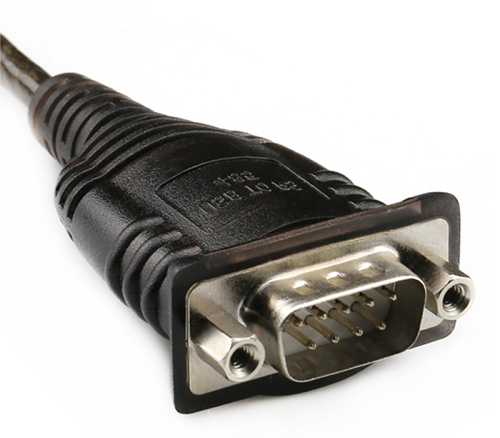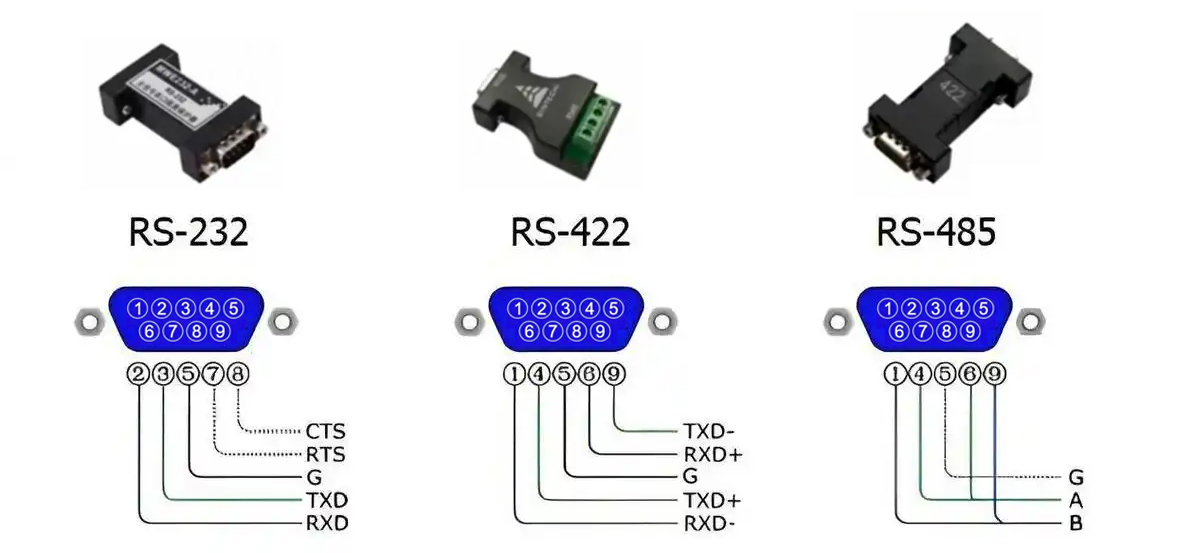什麼是RS-485串列介面?其工作原理和應用
Author:admin Date: 2025-06-12 09:06 Views:256
What is RS485 and How it’s used in Industrial Control Systems?
介紹
這 RS-485 serial interface is a standard serial communication interface designed for differential signaling. This leads to reliable performance over long-distance data transmission. The interface can handle multi-drop networks, which means several devices can connect to the same bus. Expect robust noise immunity with such an interface, which makes it the best choice even for industrial applications.
Key Features of the RS-485 Serial Interface
這 RS 485 serial interface is popular because of its many features. Such features include:
Differential Signaling
Compared to RS-232, which uses single-ended signaling, RS-485 uses differential signaling. This is where data is transmitted using two wires with a complementary signal. When the data is transmitted this way, noise interference is reduced, and signal quality is improved over long distances.
Multi-Drop Networks
This simply means that multiple devices can share a single communication bus. This makes it ideal for connecting controllers, sensors, and other equipment in a system to ensure their correct operation.
Long-Distance Communication
The RS-485 allows for long-distance communication up to 1200 meters. Data rates are maintained up to 10Mbps, which is suitable for industrial and related applications.
Noise Immunity
Noise can be an issue for most communication interfaces. However, differential signaling also tackles noise interference. The RS-485 serial interface also introduces balanced impedance, which improves the signal’s resistance to noise and other interferences. This is vital for industrial environments.
Bidirectional Communication
The interface supports bidirectional communication. This means the data can be transmitted and received simultaneously in both directions. This improves the overall speed and capacity of the interface.
How the RS-485 Serial Interface Works
The RS-485 serial interface depends on differential signaling to do its job. Differential signaling means that the RS-485 uses a two-wire (A and B) system to transmit the signal. In this case, the signal is sent over using both wires, but the sender divides the signal into two parts. When the receiver gets the signal, it is restored to the original signal.
Twisted pair cables are commonly used for this application since they offer better noise immunity, making the RS-485 suitable even for noisy environments.
The interface uses half-duplex operation, where only one device can transmit data at a given time while the others listen. A master device controls which device transmits data while the others listen.
The RS-485 depends on communication protocols such as Modbus to manage how the devices connected to the interface work.
It is worth noting that the interface also supports full-duplex mode as well. However, you will need two pairs of wires to transmit and receive the signals simultaneously.
Applications of the RS-485 Serial Interface
The RS-485 serial interface is known for its many applications. We share examples below.
- Industrial automation where it can be used for PLC and HMI communications. It is also used for VFD and motor control systems.
- It can also work for process control networks, including remote terminals such as sensors, actuators, and related equipment. You can still use it to collect data from different process points.
- If you are building automation, such as HVAC systems, you can use this for remote monitoring and control of heating, ventilation, and other applications. Connecting various components also works well for security systems.
- The RS-485 can also be used to control and monitor the lighting systems in a building.
- Motion control is also a good application for the interface. Here, you can control the movement of robots and other automation equipment.
Advantages of RS-485 Serial Interface
- Long-distance communication allows for cables up to 1200 meters that are still reliable in terms of performance.
- It is cost-effective since it can work with multiple devices while offering a long-distance communication solution.
- High data rates: The interface can support most applications with a data rate of up to 10Mbps.
- Thanks to differential signals, the interface is less prone to noise interference.
- It is highly scalable as it can support multiple devices on the same network.
- It offers good flexibility as it can work in various applications, such as process control systems.
- Highly reliable communication thanks to noise immunity, long-distance capabilities, and high data rates.
Limitations of RS-485 Serial Interface
- The RS-485 serial interface port transceivers operate within a common mode voltage range. Exceeding such limits may cause communication issues.
- The data transfer rate is not best suited for large data transfers.
- Wiring can get complicated depending on the number of devices you need to connect to the bus.
Troubleshooting an RS-485 Network
From time to time, the RS-485 network might not work as expected. This could be because of many things. Below is how you can troubleshoot the network.
Check Basic Settings
Sometimes, basic verification of the settings can resolve the issues. Ensure that the network is operating within the communication parameters, including baud rate, parity, and other settings.
Make sure proper wiring is done for the different devices. This includes grounding and ensuring the polarity of the serial interface is correct.
Inspect Wiring and Connections
Look at the cable quality. Use shielded, twisted pair wires that offer the recommended impermanence of 120 ohms. This allows for reliable performance, especially in longer networks.
The termination should also be done correctly. Improper terminals may lead to communication problems. You can remove and adjust termination points as recommended.
Always ensure there is a solid ground connection for all devices; otherwise, they might not work as well as expected.
Identity and Deal with Noise Sources
You should avoid routing the cables near interference sources. For the best performance, consider using isolation protection. Also, implement measures that can reduce noise in the connection. Examples include grounding and using shielded cables.
Also, ensure that the baud rate is reduced for cases of poor signal quality.
Test and Verify Communication
You can use a serial port tester or related software to diagnose communication issues. This ensures you can figure out what could be the problem through monitoring the serial interface port.
You can also isolate the devices that are not working and test the others to see where the problem might be.
RS-485 Vs. RS-232 vs. RS-422 Interfaces

These are all important serial interfaces. However, they operate differently. The main difference is in the duplex communication. The RS-422 and RS-232 are full-duplex by default, while the RS-485 is half-duplex unless you use additional wires to make it a full duplex.
RS-232 is not built for multi-point connections. The RS-422 can support multi-point connections, but it is pretty limited. The RS-485 supports a large number of such connections.
Looking at the transmission speed, we find the RS-485 has a high transmission speed. The RS-422 follows it, and then the RS-232 interface.
The RS-485 serial interface has the longest transmission distance. The RS-422 follows it, and finally, the RS-232.
Both RS-485 and RS-422 use differential signaling, which is good at providing better noise immunity. This is better than the RS-232 interface, which uses single-ended signaling.
結論
The RS-485 serial interface is popular because of its overall performance. You should have an easier time using this interface as it offers the best performance against noise and can maintain a reasonable data rate. Its robustness and multi-line connection features make it suitable for various industrial applications. You can always use it for any other application that can work with its features. Remember to keep in mind the tips for a good connection to ensure the interface works great.
請發送 RFQ,我們將立即回覆。
常見問題
How many devices can the RS-485 serial interface support?
The interface can support up to 32 standard unit loads on a single bus. Always check the manufacturer specifications, as some low-power transceivers may support more.
What does differential signaling mean in the RS-485 serial interface?
Differential signaling involves transmitting a signal in opposite polarities using two wires (A and B ). This technique is important for reducing noise and allowing data transmission over long distances compared to other techniques, such as single-ended signaling.
What is the maximum recommended cable length for RS-485 communication?
The RS-485 serial interface supports distances up to 1200 meters. This is for lower data rates. A higher baud rate can reduce the maximum cable length in use.


